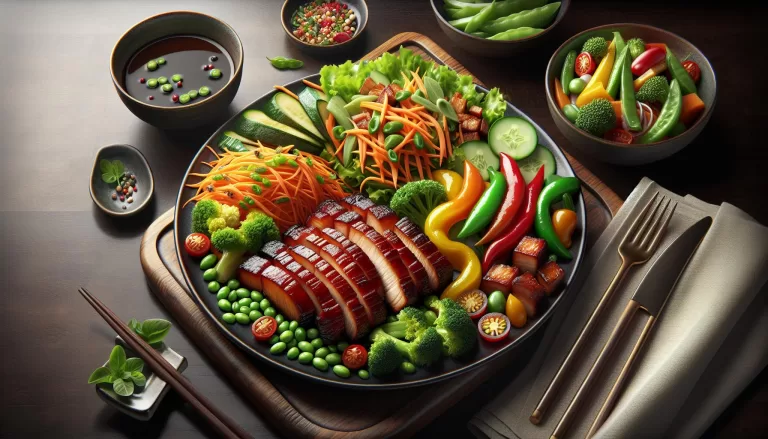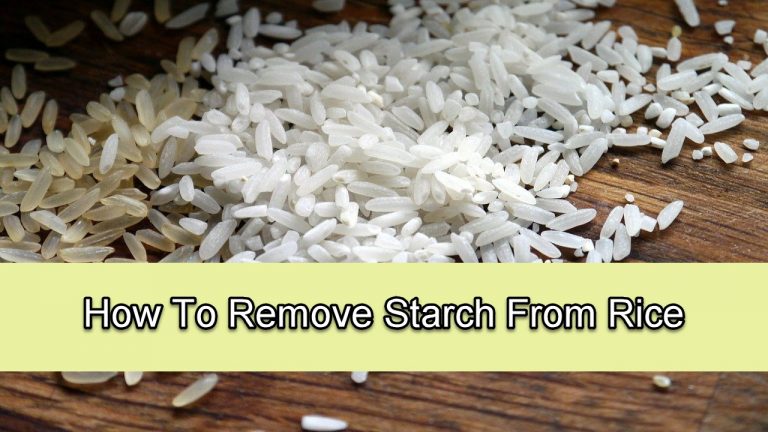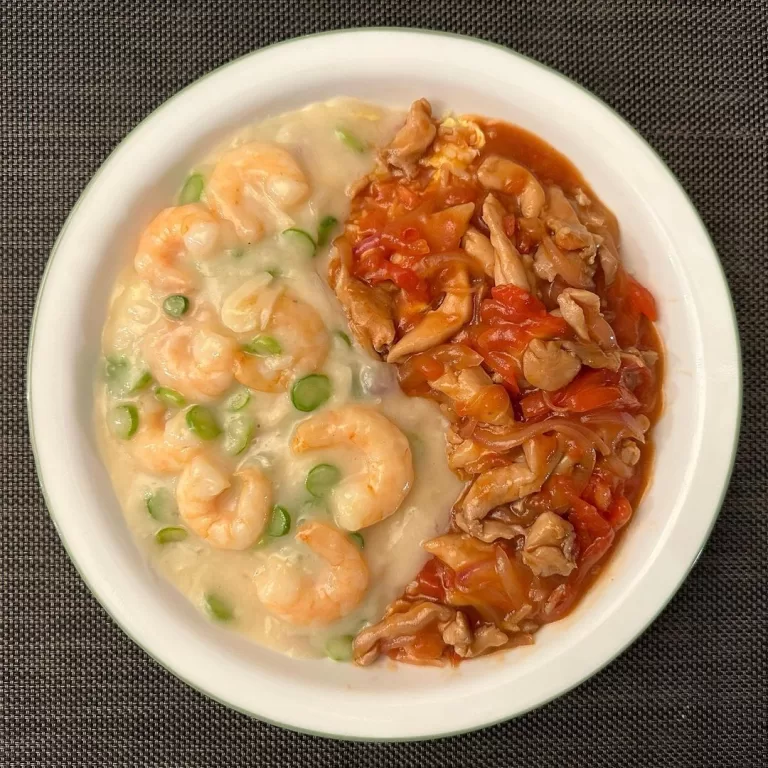3 Different Types Of Rice Explained

The rice aisle in many supermarkets can be an overwhelming place. There are just too many options available! And if you are not familiar with the type of rice you need for your recipe, you might pick up the wrong kind.
The rice that many of us are familiar with today is from Oryza sativa or Asian rice which is thought to have originated in China. Nowadays, it is widely used not just in Asian cuisines but also in many other cuisines around the world. Just think of paella, jambalaya and many curry dishes without rice.
But how can you tell which type of rice is best for a particular recipe? You can only answer this question if you are familiar with the different types of rice.
Different Types of Rice
1. Short Grain Rice
Short and almost round grains, this variety is composed of starchy and sticky rice that clump together when cooked. If you are familiar with sushi rice or glutinous rice, they are both under this category. It is the kind that you can pick up with chopsticks.
Characteristics
Generally measures under 5.5 millimeters, short-grain rice varieties are sticky and starchy. The stickiness of the grain makes them clump to each other instead of being separated. They also tend to absorb more liquid during cooking than medium grain rice and long grain rice.
Popular Types of Rice
Japanese rice
Also known as sushi rice, this rice is one of the preferred varieties in Japan. This Japanese rice short grain rice is also the kind that is used as sushi rice in many restaurants around the world. Because of its sticky texture when cooked, the rice is ideal for creating vinegared pillows for sliced raw fish.
While it’s common to see Japanese rice white grains, there is also Japanese brown rice.
Short-grain glutinous rice
The short-grain glutinous rice, also known as sweet rice or sticky rice is a good option if you are planning to cook sticky rice with mango which is a popular Thai dessert. In the Philippines, glutinous rice is widely used in making a wide variety of sweet rice treats such as Biko and carioca among others.
Sticky when cooked, glutinous white rice is widely used in cooking sweet and savory dishes in many countries in Asia. Among the popular recipes that glutinous rice or sweet rice is known for are the Chinese sticky rice and mochi.
Cooking Methods
The most common ways to cook short grain rice are the stir method using a stovetop and the absorption method using a rice cooker or stovetop.
Generally, if you want your cooked rice to be fluffy and moist, the ratio is 1 part rice and 1.2 part water. You can check the instructions in the label for the exact ratio.
As short-grain rice is generally more starchy, you need to wash it thoroughly a few times until the water runs almost clear. This way, you can remove as much starch content from the rice. Unwashed excess starch speeds up spoilage.
2. Medium Grain Rice
Risotto is perhaps one of the most popular recipes made of medium grain rice. It is the ideal type of rice when you need to add creaminess to the dish. While it is not as starchy as short grain, it produces that creamy texture when cooked.
Characteristics
Shorter and wider than the long-grain variety, medium-grain rice is typically two to three times longer than it is wide. When cooked, it has a tender, fluffy, moist and slightly chewy texture. However, it tends to clump as it cools. If used in dishes, it helps make the dish creamier rather than sticky in texture when cooked.
Popular Types of Rice
Arborio rice and carnaroli rice
Arborio rice, Carnaroli rice are types of Italian rice and are also cultivars of Japonica rice. These white rice varieties including the less famous Vialone nano are used as risotto rice. Because of the high amylopectin content of arborio rice and Carnaroli rice, they give risotto that extra creaminess that you can’t achieve using other types of rice.
Both arborio rice and Carnaroli rice are also perfect choices for various rice dishes such as rice pudding.
Valencia or bomba rice
This medium-grain rice got its name from the province and city of Valencia in Spain where it is widely cultivated. Valencia rice cooks into tender, slightly sticky, and moist rice, yet the grains are separated.
Bomba rice absorbs up to three times its volume in water as compared to most rice grains which absorb only twice the water volume. Due to this characteristic, bomba rice absorbs more flavor when incorporated into a dish. For this reason, bomba rice is popularly used in paella, stew, soups and other dishes including risotto.
Perhaps one of the noticeable features of bomba rice is that as it cooks, it breaks open crosswise instead of expanding lengthwise.
Chinese black rice (“forbidden rice”)
During the ancient time, the Chinese black rice is considered as “Forbidden Rice,” fit only for the upper class or royalties. Today, black rice is widely consumed in many regions in Asia and is also popping up in many health stores across Europe, the US and Australia.
The Chinese black rice is a non-glutinous medium grain heirloom rice. When cooked, the rice turns dark purple to black in color. It is characterized by its slightly sweet and nutty flavor.
Just like most dark-colored rice, black rice is also rich in dietary fiber and antioxidants that help boost your immune system.
Cooking Methods
The cooking methods for medium grain rice are similar to small grain rice. You can cook these types of rice using a rice cooker, pot or stovetop. You can use stir fry and absorption techniques in cooking.
Before cooking, don’t forget to thoroughly wash the rice to remove the starch content and avoid fast spoilage.
3. Long Grain Rice
Most long-grain varieties are aromatic and grow near the equator. They are commonly cultivated in countries like the Philippines, Pakistan, India, Sri Lanka and Indonesia among others.
Long grain rice such as white and brown basmati rice and jasmine rice are typically three to five times longer than they are wide. They are also generally fluffy when cooked.
Characteristics
True to its name, long grain varieties of rice are lengthy and slim. Most rice grains under this type are about four to five times longer than they are wide. Generally, the cooked grains stay fluffy and they don’t stick together.
Popular Types of Rice
Basmati rice (brown rice and white rice)
Basmati is among the popular varieties of rice with long grains. You can find it widely cultivated in India, Pakistan, and other surrounding countries. This rice variety is commonly used in many traditional South Asian dishes.
There are two versions of basmati rice: white rice and brown rice. White basmati rice is produced by removing the bran and germ from the brown rice. Because the bran and germ are rich in dietary fiber and vitamins and minerals, brown rice is considered a healthier option.
Among the long-grain varieties, basmati has the longest grains, and they even expand during cooking. Aside from its length, basmati rice is also known for its distinct aroma which intensifies with extended storage time.
Jasmine rice
The distinct aroma of jasmine rice long grain rice will remind you of pandan and popcorn. It is very aromatic right after harvest but the fragrance lessens over time. This is the reason why freshly harvested jasmine rice is expensive.
Jasmine rice is primarily grown in Thailand, Cambodia, Vietnam and Laos, and is exported in many other countries where rice is a staple food.
This type is slightly sticky when cooked, but not as sticky as sushi rice or glutinous rice. Because of its slightly sticky texture that absorbs the flavor of food, it is an ideal partner for Thai curries and stews.
Cooking Methods
When it comes to cooking long grain rice, you can simply follow the cooking methods of short and long grain rice. However, since the water-to-rice ratio varies among different types of rice, always check the product label before you cook rice.
FAQ
Can you substitute one for another?
If a recipe requires a specific type of rice, be cautious in substituting and be prepared to get a different result. For instance, if the recipe calls for arborio rice, and you only have brown rice or jasmine rice, substituting may not be a good idea in this situation. Arborio rice makes the final dish creamy which you can’t achieve with any other rice variety.
Which is healthier: white rice or brown rice?
Generally, brown rice is healthier because it contains the bran layer and germ which are rich in fiber as well as vitamins and minerals. When these two components are removed, you get the white rice.
What is the nutritional value of rice?
The nutritional value of rice greatly differs depending on the type and color of the rice. But generally, rice contains calories, fats, carbohydrates and fiber. Some varieties may also contain minerals such as calcium and iron.
Is wild rice a type of whole grain rice?
You may have wondered why wild rice is not listed among the different types of rice. Wild rice is actually not rice at all.
Many people are confused as to what wild rice really is. Wild rice looks like black whole grain rice, so the confusion is understandable.
Wild rice comes from wild grass. And since it is wild, commercial cultivation is not very successful. Because of the scarcity of wild rice, it is also relatively expensive. But because of the rich nutritional components of wild rice, its price is worth it.What is parboiled rice?
Parboiled rice is produced by a series of processes including soaking, steaming and drying of rice. The final process involves partially boiling rice in the husk. This method makes it easier to process rice by hand.
Conclusion
With the different types of rice available from short grain, medium grain to long grains, you can now cook your dish using the right kind of rice. Some varieties can easily be substituted for another. There are also varieties that are hard to substitute without compromising the quality of the recipe because of their distinct qualities that you can’t easily find in others.
Knowing and understanding the different types of rice will help you determine what variety best complements your dish.





